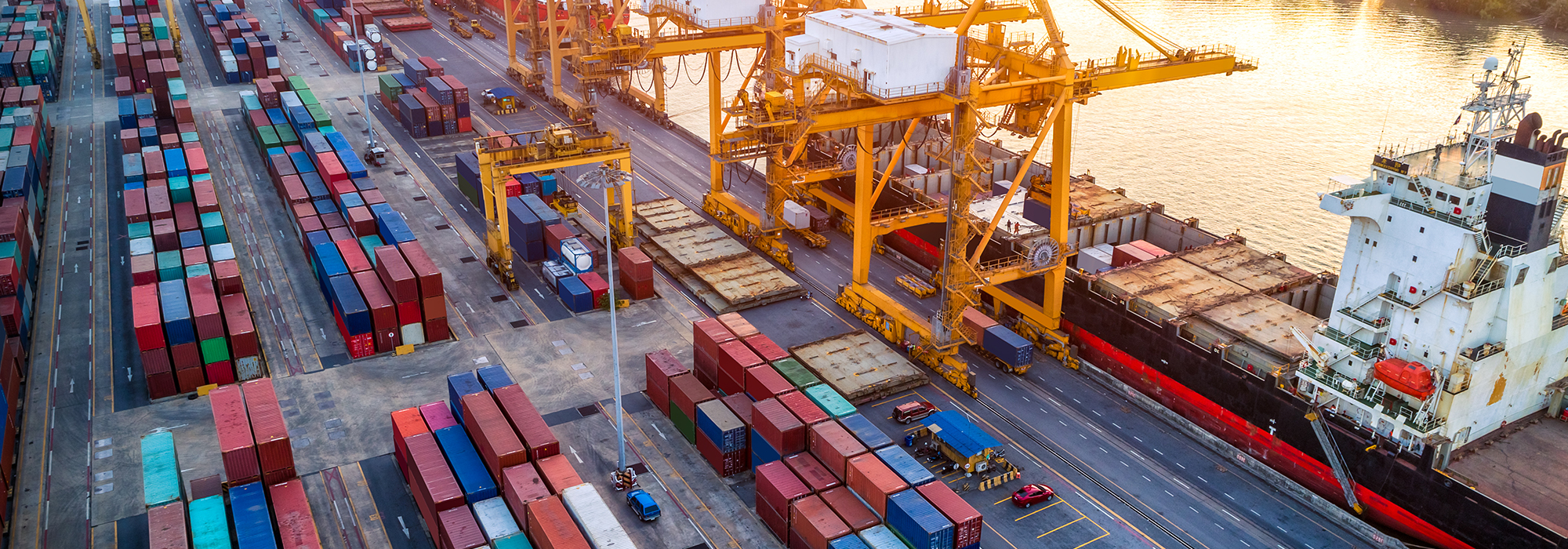
Financial intervention in the past three months to buffer the global economic shocks from COVID-19 is making records. As of mid-May, an estimated US$9 trillion has been pumped into frozen economies: the US Federal Reserve action in late March alone injected US$83- billion per day, or $1 million per second, to calm crashing markets.
While the main instruments of the economic rescue have been fiscal and monetary interventions, trade has played a major role, but it’s uncertain what trade will look like when the pandemic is over. The changing dynamic of the world trade system suggests a new wave of protectionism is well underway. Canada can work with other like-minded countries to help shape a new trading order that emerges from the pandemic and rebuild trust, or else an even greater international crisis lies ahead. Canada has some options moving forward, including forging new relationships with other like-minded countries, exploring green-recovery options and expanding e-commerce.
In April, 2020, Quebec Economy and Innovation Minister Pierre Fitzgibbon suggested that a COVID-19 recovery would not move backwards, but instead lurch towards a “new world” order characterized by protectionism, self-autonomy not only in the medical supply chains that have entered the popular lexicon – personal protective equipment (PPE), hand-sanitizers, ventilators and other equipment – but greater self-sufficiency for food and other goods.
Fitzgibbon is hardly alone. In late February, French Finance Minister Bruno Le Maire initiated steps to rebuild economic independence. In early April, Japan’s emergency economic recovery plan included US$2.2 billion to help its manufacturers move production chains from China back home or to other countries. In May, US trade representative Robert Lighthizer called the past offshoring of US jobs over because of COVID-19.
Pandemic protectionism
In the past three months, COVID-19 has seen a surge in trade protectionism. In the early days of COVID-19, countries scrambled to meet the rising demand for PPE, anti-viral medicines, sanitizers, ventilators and other medical equipment with export restrictions to ensure whatever supplies they had remained home. The first export ban for medical facemasks occurred January 23 by Chinese Taipei. In early February, the UK became the first country from the Organization for Economic Co-operation and Development (the OECD) to impose export restrictions on medicines needed to fight the virus.
According to a May 2020 report of the Global Trade Alert, World Bank and European University Institute, between late January and mid-May 2020, 86 jurisdictions – including Russia, Norway, Brazil, the United States, Japan, Pakistan, South Africa, India and others – imposed 157 different export bans and restrictions of COVID-19 medical supplies to meet rising domestic needs.
Countries also scrambled to lift import restrictions covering PPE, medicines and medical equipment, in the hope that producing countries would continue exports. Between late January and mid-May, 2020, 99 countries – including Brazil, the European Union, Argentina, Dominican Republic, Canada and others – enacted 153 measures to ease import restrictions in place before the pandemic, or to ease some of their own export restrictions initiated during the early days of the pandemic.
While trade in PPE continued, so did a new form of medical mercantilism. Pre-established commercial contracts were discarded by “pre-emptive purchasing.” In other words, contracts were undercut by the lure of higher bids, cash payments, open bullying or all three. In early April, Canada scrambled when the Trump Administration signed the “Order Under the Defense Production Act Regarding 3M Company,” creating uncertainty about the fate of commercial orders of 3M respirators.
While Canada averted a White House ban on 3M PPE imports, others did not. On April 3, Berlin’s Interior Minister Andreas Geisel described the diversion of 200,000 medical masks from their intended destination of Germany to the US as “an act of modern piracy.”
By May, the initial hoarding of medical supplies appeared to have abated when the European Commission initiated a coordinated export authorization approach for medical equipment. On May 6, Canada announced lifting of custom duties for PPE, disinfectants and sterilization products.
Food supply barriers
The second feature of pandemic protectionism involves trade in food. The early months of COVID-19 saw a jump in export bans of certain food supplies, although it was less prevalent than barriers to trade in medical supplies. From late January to mid-May, 27 jurisdictions – including Turkey, Russia, Romania, South Africa, Jordan, Kazakhstan, Egypt, Belarus, Serbia, Indonesia, El Salvador and South Africa – imposed 39 export controls on food.
For Canada, concerns about the security of its food supply in general, and meat supply chains in particular, have increased during the pandemic, prompting Ottawa to either expand existing agricultural support programs like the Canadian Dairy Commission, or launch new ones to help the farm sector: an important feature of Canada’s approach is to purchase surplus food supplies.
The decline of global supply chains
The surge in protectionism and mercantilism triggered by COVID-19 is likely to accelerate structural changes to the trading systems that began well before the pandemic. Global supply chains never recovered from the 2008 Great Recession, and its effects continue to be felt in Europe, China and North America. In 2019, the aggregate value of trade contracted by three percent. Canadian exports and imports fared comparatively better than that global average during the same period.
Red flags were being raised about growing protectionism immediately before COVID-19. In its fall 2019 World Economic Report, the International Monetary Fund warned that mounting protectionism had increased the cost of manufacturing and decreased overall business confidence and lowered new capital investments. The combined effects of the US-China tariff wars, Brexit, uncertainty regarding the rules-based World Trade Organization system, mounting debt levels and macro-economic uncertainty were already converging in late 2019. This led to a contraction of industrial production in Germany and Japan, flattened production growth in China, the UK and to (a lesser extent) in the US.
Such concerns now seem like the good old days. The spring 2020 World Trade Organization economic forecast predicted global trade could contract by as much as one-third because of COVID-19. Prospects for traded services and global supply chains are even worse, with the WTO warning that many traded services could be lost forever.
Developing countries pounded and international trust frayed
Squeezed between rising protectionism and shrinking global supply chains are developing countries. In its 2020 Global Development Report, the World Bank concluded that those few developing countries engaged in global supply chains benefited through higher wages, government revenues, new skills and GDP growth. It is now likely those fragile development gains may be lost for a generation.
Public health services in many low-income countries were strained before the pandemic. External debt servicing payments in several low-income countries were higher than actual spending on public health in 2019. Since few developing countries have any capacity to manufacture their own ventilators or medicines, the surge in medical protectionism during the pandemic has left many developing countries isolated and exposed.
Food protectionism may pose an even greater threat. The United Nations recently warned of the risk of a looming food crisis, the result of a perfect storm of rising export restrictions, an estimated 26 million refugees and many more displaced persons, climate-change and other factors. Prior to COVID-19, an estimated 820 million people worldwide faced food insecurity. In late April, the World Food Program warned of famines of biblical proportions.
Responding to rising protectionism, the heads of the WTO and the IMF pleaded with countries in April to lift trade restrictions on food and medicines and rebuild international cooperation. Three days later, the US announced a new $3 billion fund under the Agricultural Marketing Service program to continue purchases of 100 percent American grown and processed foods.
Now what?
What are Canada’s options in light of rising protectionism and, perhaps worse, a sharp erosion of trust among nations?
First, Canada should help lead international efforts among like-minded countries to increase emergency support to developing countries facing acute medical supply shortages and chronic food shortages.
Medical and food aid to help refugees and displaced persons is an urgent priority. Canada can also help support new ways to support developing countries trying to benefit from post-COVID-19 trade realities. Launching a new, more ambitious and inclusive Aid-for-Trade program is one option in need of fresh thinking and sustained leadership. More immediately, Canada should examine opportunities to link its COVID-19 food purchasing programs with direct food aid to the most vulnerable people in refugee camps and the most exposed developing countries.
Second, green-recovery programs should include green trade policies. In early May, a report co-authored by Nobel Prize winning economist Joseph Stiglitz concluded that investments in renewable energy and green infrastructure produce better economic results compared to business-as-usual approaches.
Recent steps by the World Customs Organization to expand tariff categories for green goods and services helps the greening of trade. Since the pandemic, France and the Netherlands have called for the EU to expand green trade exports and curb carbon-intensive imports through border carbon adjustment measures. Last September, New Zealand Prime Minister Jacinda Ardern announced a five-country coalition linking trade, climate and sustainable development. Canada should intensify further green trade pathways and join the New Zealand-led trade-climate initiative.
Third, while most sectors have been battered during the pandemic, others like e-commerce have expanded. Canada is an important global supplier of the metals needed not only to make computers, smart phones and other electric work, but also in supplying the metals – like copper and cadmium – needed to scale-up for renewable energy technologies. Recalibrating an innovative green industrial policy geared to scale-up renewable energy and new digital platforms is an opportunity both for jobs at home and new markets abroad.
The battering of international trade during the early days of COVID-19 marks the first wave of greater protectionism to come. The big test will be if and when a vaccine is developed. If new blocks are created between those who have and those who lack access to life-saving medicines, the likelihood of an even greater international crisis will follow. The recent announcement that Canada would co-host a UN Summit on the pandemic recovery is a strong step. Another will be helping rebuild trust in a reformed rules-based trading system.
This article is part of the The Coronavirus Pandemic: Canada’s Response special feature.










